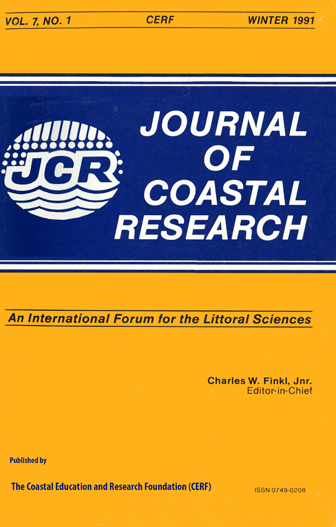Experimental Dune Building and Vegetative Stabilization in a Sand-Deficient Barrier Island Setting on the Louisiana Coast, USA
Keywords:
Barrier island, beach, erosion, sand fencing, vegetation, Uniola paniculata, Panicum amarum, Paspalum vaginatumAbstract
The first large-scale dune building and stabilization project in Louisiana that utilized sand fencing to stimulate sand accretion was established on Timbalier Island, a sand-deficient barrier island of the Louisiana coast, in May 1981 and evaluated through August 1984. Along a 305 m length of beach three types of Band fencing orientation and three species of dune plants were tested. This study demonstrated that dune building and vegetative stabilization are possible in Louisiana's subsiding and sand-deficient coastal environment, although rates of sand accumulation were lower than in coastal areas with plentiful sand supplies. Straight sand fencing oriented parallel to the beach with perpendicular side spurs initially accumulated the most sand. However, after 27 months straight sand fencing (without perpendicular side spurs) placed either parallel or diagonal to the beach accumulated the most sand. Vegetative plantings without sand fencing accumulated very little sand. Of the three dune species planted, Panicum amarum had the highest survival rate. Uniola paniculata had a lower survival rate that was, however, comparable to those found in other studies, Paspalum vaginatum had the lowest survival rate. Although a dune can effectively he created with sand fencing and stabilized vegetationally in Louisiana, beach nourishment is apparently necessary to maintain the created dune since coastline retreat is inevitable in this sand-deficient and subsiding environment.


